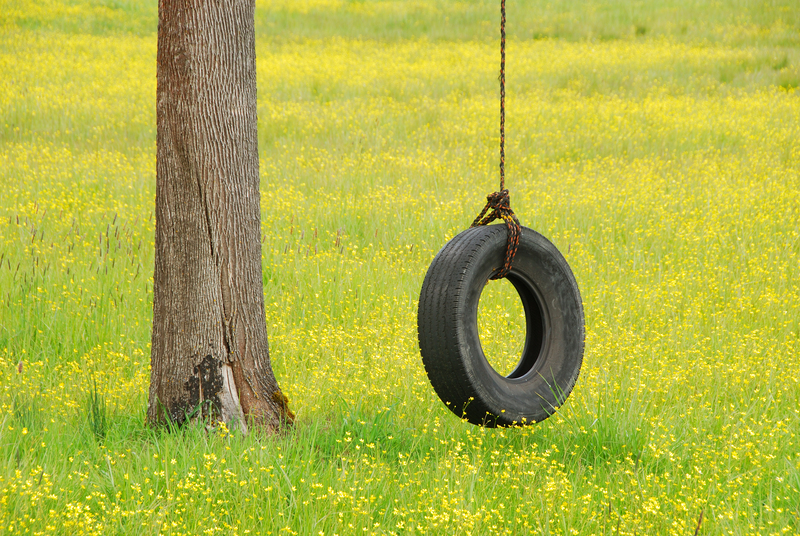Biodegradable Waste: Effective Handling Advice
Posted on 27/09/2025
Biodegradable Waste: Effective Handling Advice
In an era marked by heightened environmental consciousness, the effective handling of biodegradable waste has become a pressing issue. Biodegradable waste includes any organic matter that can be decomposed by bacteria, fungi, and other microbial organisms. Understanding how to manage this type of waste effectively is essential for both environmental sustainability and public health.
What is Biodegradable Waste?
Biodegradable waste primarily consists of organic materials such as food scraps, yard trimmings, paper, and certain types of agricultural waste. Unlike non-biodegradable waste, which can persist in the environment for centuries, biodegradable waste breaks down relatively quickly, producing smaller amounts of waste and releasing essential nutrients back into the soil.

The Importance of Proper Biodegradable Waste Management
Proper management of biodegradable waste is crucial for multiple reasons:
- Environmental Benefits: Decomposing organic matter returns nutrients to the soil, improving soil health and promoting plant growth. Proper management also helps reduce greenhouse gas emissions, particularly methane, a potent greenhouse gas released when organic matter decomposes anaerobically in landfills.
- Economic Benefits: Reducing the volume of waste sent to landfills lowers disposal costs and can generate material for compost, which can be sold or used to improve local agriculture.
- Public Health Benefits: Incorrectly managed biodegradable waste can attract pests and create unpleasant odors, posing potential health risks to nearby communities.
Effective Methods for Handling Biodegradable Waste
Several methods can be employed to handle biodegradable waste effectively. These include composting, anaerobic digestion, and vermiculture. Each method offers unique benefits and can be chosen based on the specific needs and capabilities of a community or individual household.
Composting
Composting is one of the most popular and simple ways to manage biodegradable waste. It involves the aerobic decomposition of organic material to produce humus, a nutrient-rich soil amendment. Composting can be done at various scales, from small household compost bins to large industrial composting facilities.
- Steps for Home Composting: Start by choosing a suitable bin or composting area. Layer different types of organic waste, maintaining a balance between "green" (nitrogen-rich) materials like vegetable scraps and "brown" (carbon-rich) materials like leaves and paper. Regularly turn the compost to aerate it and speed up decomposition. The compost is ready to use when it is dark brown, crumbly, and has a pleasant earthy smell.
- Advantages: Composting at home reduces waste sent to landfills, lowers municipal waste management costs, and produces valuable compost for gardening. Industrial composting facilities can process larger volumes of waste, including items like meat and dairy that are not suitable for home composting.
Anaerobic Digestion
Anaerobic digestion involves the breakdown of organic matter by microorganisms in the absence of oxygen. This process produces biogas (a mixture of methane and carbon dioxide) and digestate (a nutrient-rich slurry).
- Steps for Anaerobic Digestion: Organic waste is placed in a sealed, oxygen-free container called a digester. Microorganisms break down the waste, producing biogas that can be captured and used for energy. The remaining digestate can be used as a soil amendment.
- Advantages: Anaerobic digestion not only reduces the volume of waste but also generates renewable energy, which can be used to power homes or businesses. The process also produces valuable byproducts that can improve soil health and agricultural productivity.
Vermiculture
Vermiculture, or worm composting, uses specific types of worms (usually red wigglers) to break down organic waste. The worms consume the waste and produce castings, a highly nutrient-rich form of compost.
- Steps for Vermiculture: Set up a worm bin with bedding material like shredded paper or cardboard. Add worms and small amounts of organic waste, gradually increasing the amount as the worms multiply. Monitor moisture levels and provide adequate ventilation to keep the worms healthy. Harvest the worm castings periodically and use them to enrich soil.
- Advantages: Vermiculture is ideal for small-scale waste management, particularly for households with limited outdoor space. The process is relatively odor-free and produces high-quality compost.
Challenges and Solutions in Biodegradable Waste Management
Despite its benefits, biodegradable waste management faces several challenges. Addressing these challenges requires a combination of education, innovation, and community engagement.
- Contamination: Non-biodegradable materials can contaminate composting and anaerobic digestion processes, reducing efficiency and quality. Solution: Educate communities about proper waste segregation and implement stricter controls at waste collection points.
- Infrastructure: Many areas lack the necessary infrastructure for large-scale biodegradable waste management, particularly anaerobic digestion facilities. Solution: Invest in infrastructure development and encourage public-private partnerships to fund and build necessary facilities.
- Public Awareness: Low levels of public awareness about the benefits and methods of biodegradable waste management can hinder participation. Solution: Conduct educational campaigns and workshops to inform people about the importance of proper waste management and how they can contribute.
- Policy and Regulation: Inconsistent policies and regulations can create confusion and hinder effective waste management practices. Solution: Develop clear, consistent policies at national and local levels to guide waste management efforts and ensure compliance.

Innovative Approaches to Biodegradable Waste Management
As technology and societal awareness advance, innovative approaches to biodegradable waste management continue to emerge. These approaches hold promise for more efficient, scalable, and sustainable waste management solutions.
Bioplastic Production
Researchers are exploring the use of organic waste to produce bioplastics, an eco-friendly alternative to traditional plastics. Bioplastics made from biodegradable waste can help reduce reliance on fossil fuels and lower plastic pollution.
Biochar Production
Biochar, a type of charcoal produced from organic waste through pyrolysis (thermal decomposition in the absence of oxygen), offers numerous environmental benefits. It enhances soil fertility, sequesters carbon, and can be used as a renewable energy source.
Community Composting Programs
Community composting programs engage local residents in collective composting efforts. These programs can increase composting rates, reduce waste management costs, and foster community cohesion. Successful programs often include educational components and support from local governments.
Conclusion
Biodegradable waste management is a critical aspect of sustainable living and environmental stewardship. By understanding the different methods of handling biodegradable waste, addressing challenges, and embracing innovative approaches, individuals and communities can significantly reduce their environmental impact. From composting and anaerobic digestion to vermiculture and biochar production, effective biodegradable waste management offers numerous benefits for the environment, economy, and public health. It is essential for everyone to take part in these efforts and contribute to a more sustainable future.


 020 8610 9486
020 8610 9486












